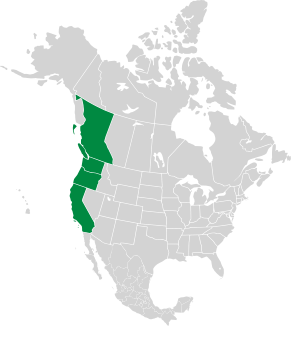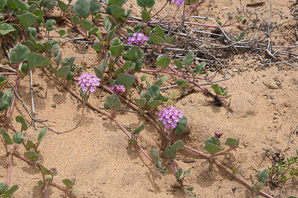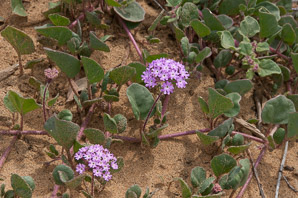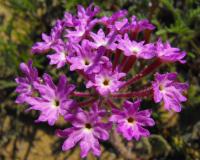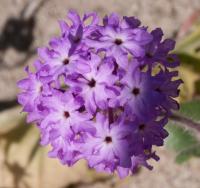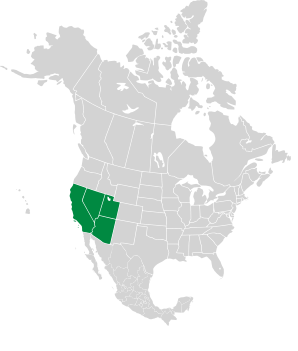
|
Abronia umbellata Lam. Pink sand verbena
Like its cousin yellow sand verbena, pink sand verbena grows in loose beach sand and dunes, along the west coast of North America, between southern CA and Vancouver Island in British Columbia. It is native to this region. The neat round "flowers" are really bracts (modified leaves)—the plant does not have petals. These plants are less than 6″ (15 cm) in height. Pink sand verbena is the first Californian flower described by science, back in 1786. |
2/26/2010 · Torrey Pines State Park, La Jolla, California · ≈ 1½ × 1′ (54 × 36 cm) 2/26/2010 · Torrey Pines State Park, La Jolla, California · ≈ 10 × 7″ (26 × 17 cm) |
||||||||||||||||||||||||||||
|
| |||||||||||||||||||||||||||||
| You are here Abronia umbellata |
Abronia villosa |
||||||||||||||||||||||||||||
|---|---|---|---|---|---|---|---|---|---|---|---|---|---|---|---|---|---|---|---|---|---|---|---|---|---|---|---|---|---|
| Common Name |  |
 |
|||||||||||||||||||||||||||
| Plant | Less than 6″ (15 cm) high, spreading in mats. | Less than 6″ (15 cm), in mats up to about 1½′ (50 cm) wide. | |||||||||||||||||||||||||||
| Flowers | Pink to purple, with white centers. | Magenta, purple to pink. Sweet-smelling. Centers are not white. | |||||||||||||||||||||||||||
| Leaves | Thick, succulent, oval or diamond-shaped. | Dull gray-green, oval-shaped. | |||||||||||||||||||||||||||
| Stem | Often hairy. | Very hairy, sticky. | |||||||||||||||||||||||||||
| Range/ Zones |
|
|
|||||||||||||||||||||||||||
| Type | Wild | Wild | |||||||||||||||||||||||||||
Identification: The small ball-shaped flowerheads are typical of verbenas. These salt-tolerant plants are common on beaches in their range. While yellow sand verbena is found within about 200′ (60 m) of the ocean, pink sand verbena occurs further inland as well. This species looks similar to desert sand verbena (see above), but it is not found in true desert regions. An endangered variety, Abronia umbellata ssp. breviflora, also looks similar.
Online References:
The Lady Bird Johnson Wildflower Center
Turner Photographics' Wildflowers site
Abronia umbellata description by Thomas H. Kent, last updated 4 Dec 2020.
© FloraFinder.org. All rights reserved.
Range:
